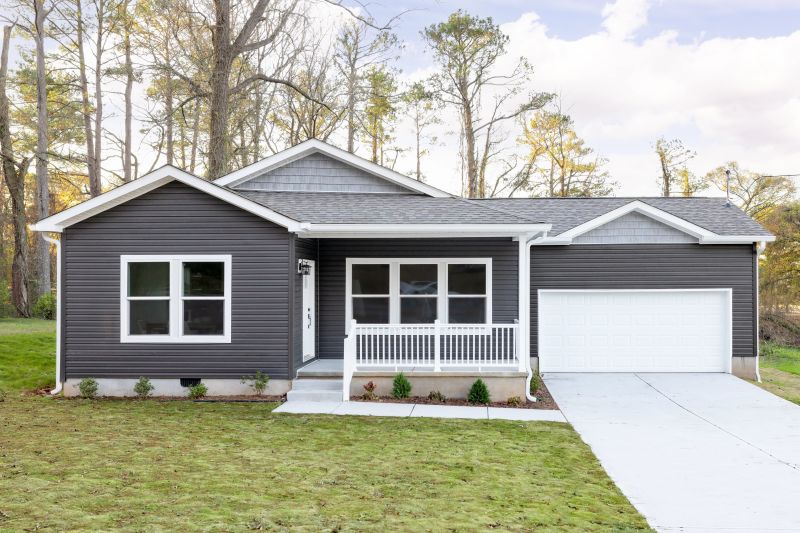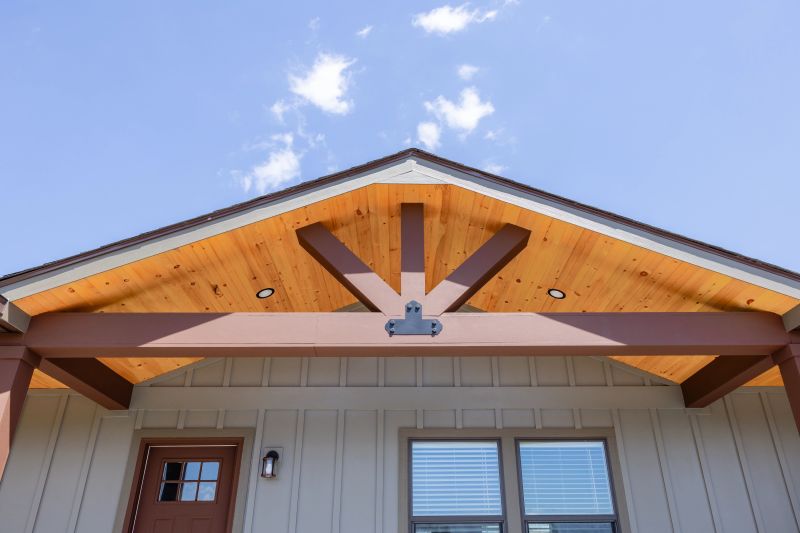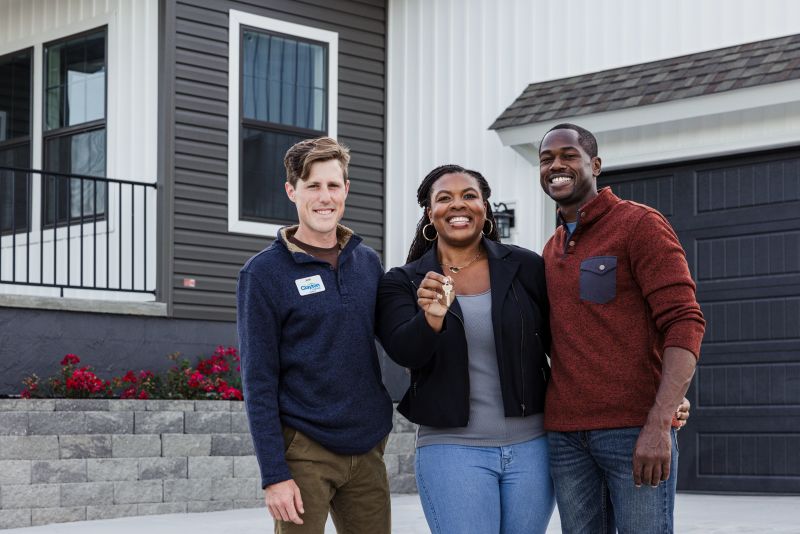Your Complete Manufactured Home Glossary

Understanding the steps to buying a manufactured home starts by understanding some of the most commonly used vocabulary. Check out Clayton’s guide to everything you need to know about manufactured home terms.
Whether you’re at the very beginning of your home buying journey or you’re an expert, it’s always important to brush up on housing terms. The Clayton teams wants to make sure you understand the different steps in our home buying process, and what better way to help you do that than with this guide to all of our key lingo? As you get ready for move-in day, we’ll have you talking like a pro.
Home Building Terms
CrossMod® Home: A type of manufactured home that combines features of off-site and typical site-built homes. They can appraise like site-built homes using site-built comps, and their financing options can have a number of advantages over loans secured by standard manufactured housing.
Flood Zone: The rating of the estimated flood risk to a home, depending on the region where the home is located.
Grading: Shaping the soil around the home site and foundation to allow for water to drain properly.
HUD Code: The national standard manufactured homes must meet. It includes federal guidelines for frame requirements, thermal protection, plumbing, electrical and more. It was put in place in 1976 by the Department of Housing and Urban Development, which manages the code and oversees enforcement.
HUD Data Plate: It lists information such as the name and address of the home’s manufacturer, the serial number, home model, the date the home was built, verification the home meets HUD standards and more. The data plate is usually found inside a kitchen cabinet, electrical panel or bedroom closet.
HUD Tag: Also referred to as the certification label, all manufactured homes built and sold must be labeled with a HUD tag that assures the homeowner the home was built according to HUD’s Manufactured Home Construction and Safety Standards.
Manufactured Home: Manufactured homes, like those built today by Clayton, are off-site built homes constructed after 1976 in compliance with the HUD Code.
Mobile Home: Often used interchangeably with manufactured home, a mobile home actually refers to an off-site built home constructed prior to 1976, when HUD Code was put into place, and does not meet the HUD Code’s standards.
Modular Home: A type of off-site built home that is constructed according to all of the state, regional and local building codes that apply to the final home location, just like a typical site-built home.

Multi-section Home: Double and triple section homes can also be referred to as multi-section homes. Multi-section homes have larger, more varying dimensions than a single-section home and are delivered in two or three sections that are joined together at the home site.
Off-site Built Home: Sometimes also called prefabricated or prefab homes, off-site built homes are constructed inside of a facility and then transported to the home site for the final setup.
Permanently Affixed to Land: A home is permanently affixed to land when it is permanently placed on the foundation and cannot be moved.
Pier and Beam Foundation: The pier and beam system is the most popular type of manufactured home foundation. It uses one or more metal platforms placed under the foundation piers, and steel bracing then secures these platforms to the I-beams under the home.
Roof Load Zone: Depending on the region where the home is located, a roof load zone is the rating of how many pounds of snow per square foot the home’s roof is required to be able to resist.
Roof Pitch Ratio: The ratio describing the slope of the home’s roof based on how many inches it rises for every foot of horizontal distance. Manufactured homes typically have a roof pitch between 3/12 and 5/12.

R-Value: A value that represents the ability of insulation to resist the transfer of heat. The higher the number, the higher resistance of heat passing through the insulation and your home.
Single-section Home: A single-sectioned home typically ranges in size from 784 sq. ft. to 1,440 sq. ft., which is about 14’ x 56’ to 18’ x 80’. They can have a variety of different floor plans and layouts.
Skirting: Skirting, also known as underpinning, wraps around the bottom of a manufactured home to enclose the space underneath it and can be made of a variety of materials.
Thermal Zone: Depending on the region where the home is located, a thermal zone is the rating of the U-value, which measures the rate of heat transmission or leakage through the home.
Truss System: The roofing frame for a home is referred to as the truss system. This system, made up of a wood frame, is the base structure of the home’s roof, and it is where roof insulation will be placed. Shingles will then cover the top of the truss system.
Undercarriage: The undercarriage is the bottom part of the home that protects the insulation and keeps out moisture and pests. There are other parts under a manufactured home that may also be called the vapor barrier, mobile home belly, mobile home belly board, underbelly, bottom board and more.
Wind Zone: Depending on the region where the home is located, a wind zone is the rating of the amount of wind pressure a manufactured home is required to be able to withstand.

Home Buying Terms
Now that we’ve discussed all the things you need to know about building the home, let’s talk about buying the home. Some of the terms that pertain to manufactured homes can be different from those you see in the process of buying a site-built home.
Appraisal: The assessment of a home to determine its current market value, which is usually completed by a licensed third-party appraiser.
Chattel Loan: This type of loan is extended to an individual only for a personal, movable piece of property. The loan is secured by the personal piece of property.
Conventional Loan: A loan that is not government-insured or guaranteed but is offered by institutions such as banks, credit unions, mortgage brokers or online lenders.
Deed: A legal document that is recorded in the land records of the jurisdiction where the property is located that shows proof of ownership in the land and home, if the home is attached to the land.
Down payment: The amount you pay toward the home upfront, which is usually a certain percentage of the home’s value.
Equity: A home’s equity is the difference between what you currently owe on your home’s mortgage and what the home is currently worth.
FHA Loan: A government-insured home loan by the Federal Housing Administration that is funded by an approved, private lender and meets the FHA’s requirements to be insured, such as credit score, down payment amounts and mortgage insurance premiums.

Homeowner’s Insurance: Sometimes referred to as hazard insurance, homeowner’s insurance protects from losses and damage to your property caused by unexpected perils, which are exposures to dangers or threats such as fire, burglary, tornadoes, or burst pipes. Coverage will depend on the policy and what your lender requires.
Home Trade-in: Many home buyers often wonder, “Can I trade-in my manufactured home?” In some cases, your local Clayton home center will accept your current home, and its trade-in value can be applied toward your down payment on or the purchase price of your new Clayton home.
Loan Origination: Loan origination generally refers to the entire mortgage process to finance the purchase of a home, from the loan application to closing.
Property Taxes: Property taxes are charged by local governments to generally help with funds for infrastructure, community service and education. They are typically based on the value of the property you own and are either paid directly by the property owner or by the lender through an escrow account, depending on what your lender requires.
Survey: A drawing of your property showing the location of the lot, the house, boundary lines and existing structures on a property.
Title: A title, also sometimes referred to as a certificate of title, is a document that serves as proof of ownership of your manufactured home. This also can sometimes refer to the document that shows the legal owner of the land.
USDA Loan: A government-guaranteed home loan under the United States Department of Agriculture that’s funded by an approved lender and meets the USDA’s eligibility requirements to be insured, such as a low-to-moderate income and the home being located in a rural location.
With this guide, you’ll be well on your way to feeling confident and ready for your home buying experience. And to explore even more, you can visit our Studio blog to find articles on a wide variety of helpful topics, from learning more about home financing options and the building process to popular home features and what to expect at a home center.
CrossMod® is a registered trademark of the Manufactured Housing Institute.
Are you ready to find your dream home?
Start shopping now or find a home center in your area to learn more about Clayton Built® home options.By entering your email address, you agree to receive marketing emails from Clayton. Unsubscribe anytime.
© 1998-2025 Clayton.




